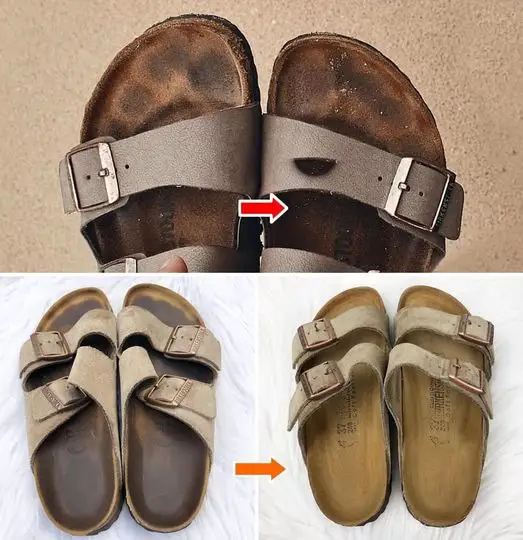Sandals are a staple in warm-weather wardrobes, offering comfort and breathability. However, frequent use can lead to unsightly black marks, especially on the footbed, resulting from sweat, dirt, and oils. Maintaining the appearance and hygiene of your sandals is essential for both aesthetics and longevity. This guide provides comprehensive methods to effectively remove black marks from various types of sandals.
Understanding the Causes of Black Marks
Black marks on sandals primarily result from:
- Sweat and Oils: Natural perspiration and skin oils can seep into the footbed, leading to discoloration over time.
- Dirt and Debris: Outdoor use exposes sandals to dust and grime, which can accumulate and cause stains.
- Material Wear: Certain materials, like suede or fabric, are more prone to showing marks due to their absorbent nature.
General Cleaning Tips
Before delving into specific cleaning methods, consider these general tips:
- Regular Maintenance: Wipe your sandals with a damp cloth after each use to prevent buildup.
- Spot Testing: Always test cleaning solutions on a small, inconspicuous area to ensure they don’t damage the material.
- Avoid Submersion: Do not soak sandals entirely, as this can weaken adhesives and materials.
Cleaning Methods Based on Material
- Leather Sandals
- Materials Needed:
- Mild leather cleaner or saddle soap
- Soft cloth
- Water
- Leather conditioner
- Steps:
- Dampen the cloth with water and apply a small amount of leather cleaner.
- Gently rub the affected areas in circular motions to lift the stains.
- Wipe off any excess cleaner with a clean, damp cloth.
- Allow the sandals to air dry away from direct sunlight.
- Once dry, apply a leather conditioner to keep the material supple.
- Materials Needed:
- Suede Sandals
- Materials Needed:
- Suede brush or soft toothbrush
- White vinegar
- Soft cloth
- Steps:
- Use the suede brush to gently lift dirt and restore the nap of the suede.
- Dampen a cloth with white vinegar and lightly dab the black marks.
- Allow the area to dry completely.
- Once dry, brush the suede again to restore its texture.
- Materials Needed:
- Fabric or Canvas Sandals
- Materials Needed:
- Mild detergent
- Soft brush or toothbrush
- Water
- Baking soda (optional)
- Steps:
- Mix a small amount of mild detergent with water to create a soapy solution.
- Dip the brush into the solution and gently scrub the stained areas.
- For stubborn stains, create a paste with baking soda and water, apply it to the marks, and let it sit for 15 minutes before scrubbing.
- Wipe off any residue with a damp cloth.
- Allow the sandals to air dry completely.
- Materials Needed:
- Rubber or Synthetic Sandals
- Materials Needed:
- Dish soap
- Water
- Soft brush
- Baking soda (optional)
- Steps:
- Mix dish soap with warm water to create a sudsy solution.
- Use the brush to scrub the sandals, focusing on stained areas.
- For persistent marks, sprinkle baking soda on the stains and scrub gently.
- Rinse thoroughly with clean water.
- Dry the sandals with a towel or let them air dry.
- Materials Needed:
Preventive Measures
- Use Protective Sprays: Apply water and stain repellents suitable for your sandal’s material to prevent future stains.
- Wear Socks or Foot Liners: When appropriate, use socks or liners to reduce direct contact between your feet and the sandal, minimizing sweat absorption.
- Rotate Footwear: Avoid wearing the same pair daily to allow them to air out and reduce moisture buildup.
Conclusion
Maintaining the cleanliness of your sandals not only enhances their appearance but also extends their lifespan. By following these tailored cleaning methods and preventive tips, you can keep your sandals looking fresh and free from unsightly black marks. Regular care ensures that your favorite footwear remains a comfortable and stylish choice for seasons to come.

